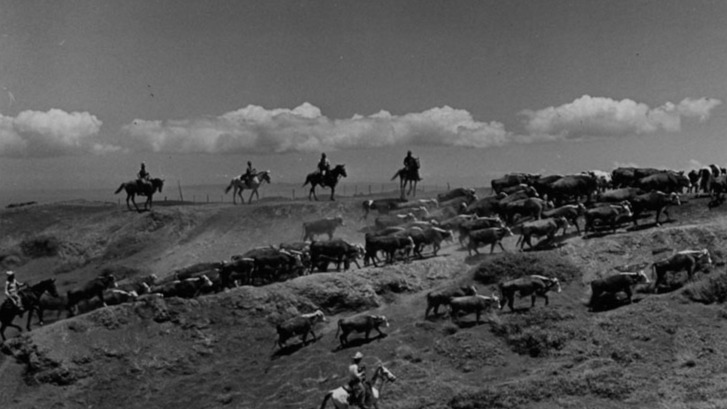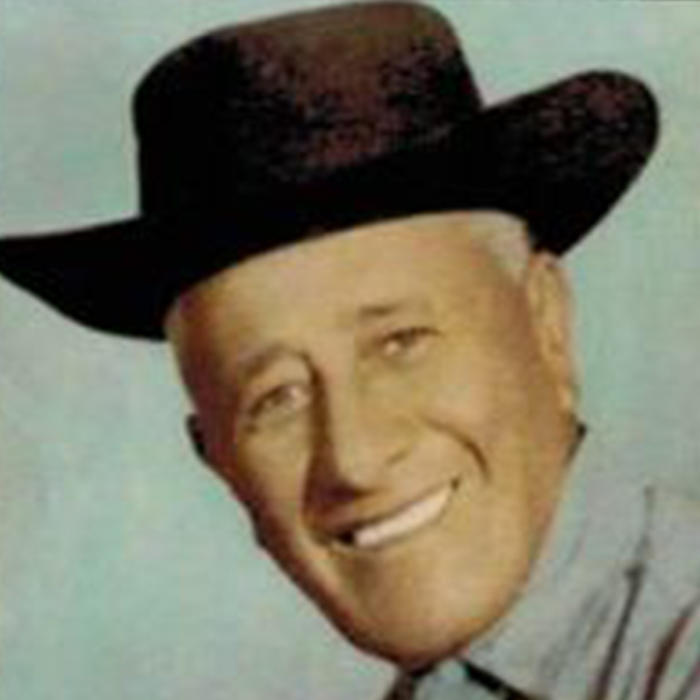
- Home
- Paniolo Hall of Fame
- Inductees
- Peter Kalahoolewa Kainoa, Sr.


Peter Kalahoolewa Kainoa, Sr.
Year Inducted: 2013
Wright Ranch | Hawai'i
Woods Ranch | Hawai'i
Kahua Ranch | Hawai'i
Peter Kalahoolewa Kainoa was born in 1890 at Kapaliuka, North Kohala. A fourth generation native Hawaiian, his paternal great-grandfather was a Mexican vaquero, Federico Ramon Baesa.
True to his roots, Peter was on horseback from childhood. For him, the life of a paniolo meant learning all of the important tasks such as building, mending and maintaining fence lines, and waterlines. He quickly excelled at moving cattle, breaking horses, branding cattle, and shoeing horses. He practiced these skills on Wight Ranch, Woods Ranch and Kahua Ranch.
Ranch manager, Ronald von Holt, was quick to notice Peter’s excellence in horsemanship and cattle handling of both ʻāhiu (wild) and gentle commercial beef cattle. Mr. Von Holt so respected Peter that he gifted the Paniolo Nui (main cowboy) a fine ponoʻi (private, personal) mount. Atop a stout grey gelding he called “Blue,” Peter Kainoa could be found at Kawaihae Bay, hōʻau pipi (swimming the cattle). These were long days where dozens of grass-finished Kahua Ranch steers where led through the waves to the longboats for shipment to Honolulu on a variety of steamships that included the SS Hawaiʻi, SS Humuʻula, SS Bee, and the SS Horner.
Peter was an early advocate of quiet manners in handling cattle especially those ready for market. This meant walking the selected cattle from high elevation finishing paddocks down to Puʻu Kamaliʻi, a small mound above Kawaihae Bay where fat steers rested. By daybreak, the cattle were walked to the shipping corral at Honoula Bay where the excitement began. In the midst, Peter was riding in the crude saddle called noho hōʻau atop Blue hoʻolei (looping) his non-choke ¾ inch kaula malina lariat around a Honolulu-bound steer.
Peter, along with his brother Lui, can be credited with preserving traditional paniolo gear; this included the Hawaiian tree saddle rigged with a ʻaweʻawe (braided horn wrap) and draped with a protective lālā (leather apron). The cantle of the traditional saddle was always dressed with a pale huelo (tailpiece) and the stirrups covered with sturdy pālūlū (tapadero). The lālā (mochilla), the pale huelo (anguitera), and the pālūlū were ancestral gear of their vaquero great-great grandfather.
Peter gave more than 60 years of his life to the ranching industry and he remained an active paniolo upon his retirement from Kahua Ranch. He “lived by the lariat” and sadly, lost his life in a roping accident and “died by the lariat” when a runaway steer plowed his horse over. Hawaiʻi owes a debt of gratitude for this great Hawaiian man whose life is marked by exemplary “ paniolo mau” tradition.